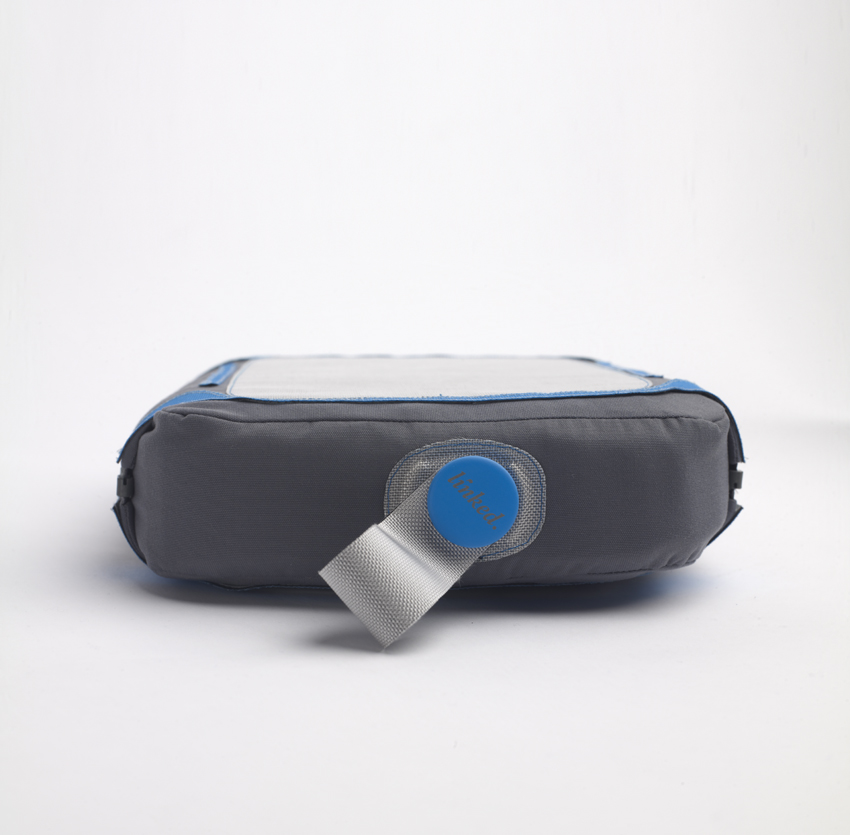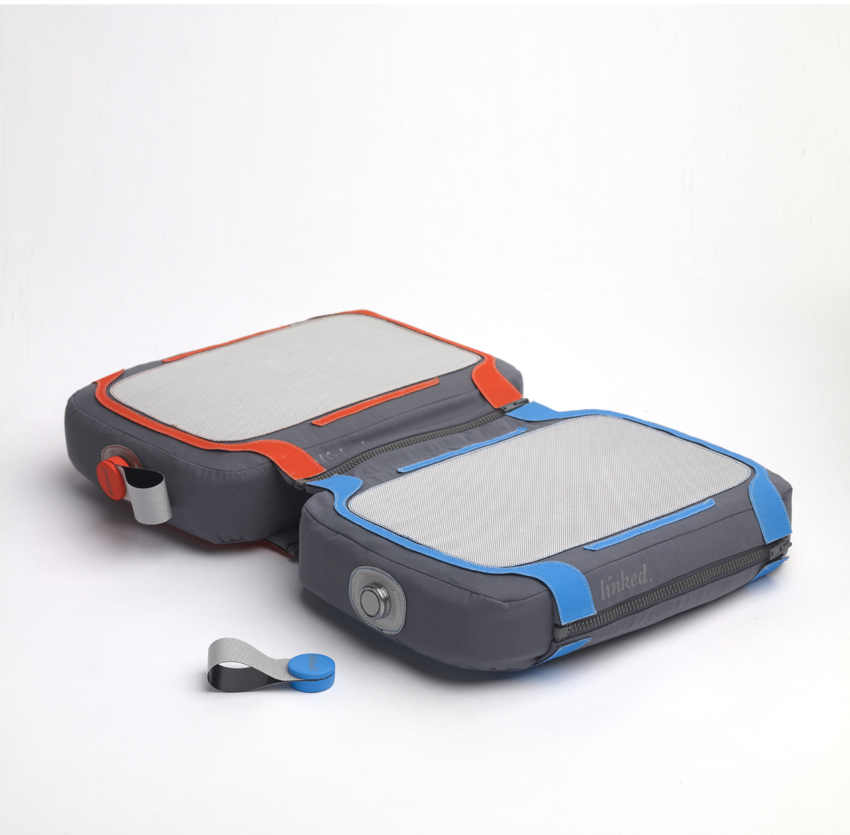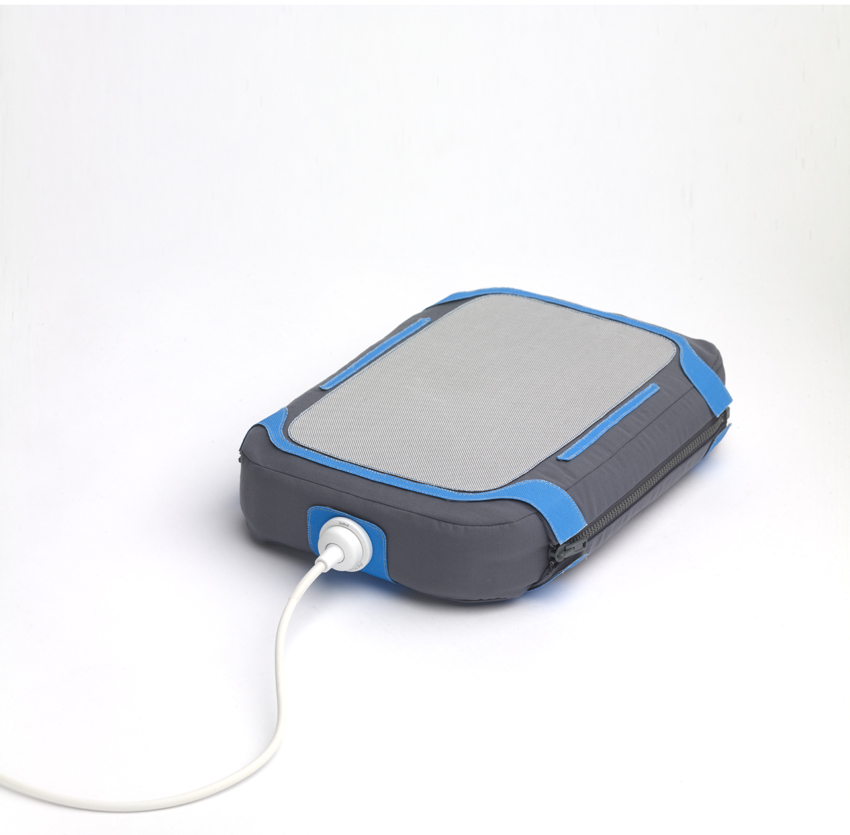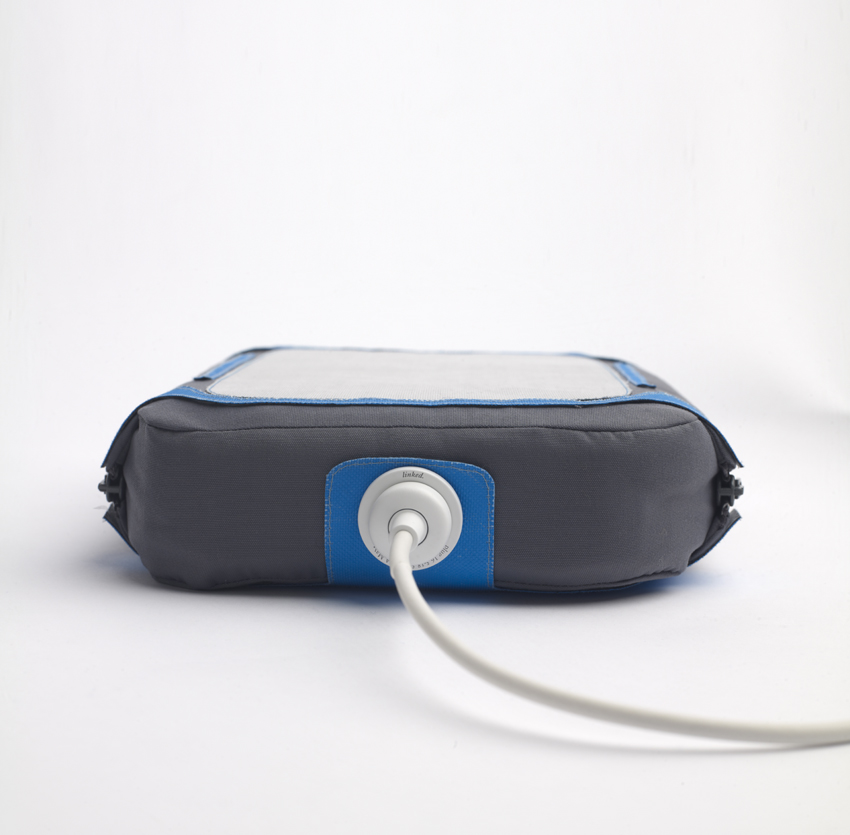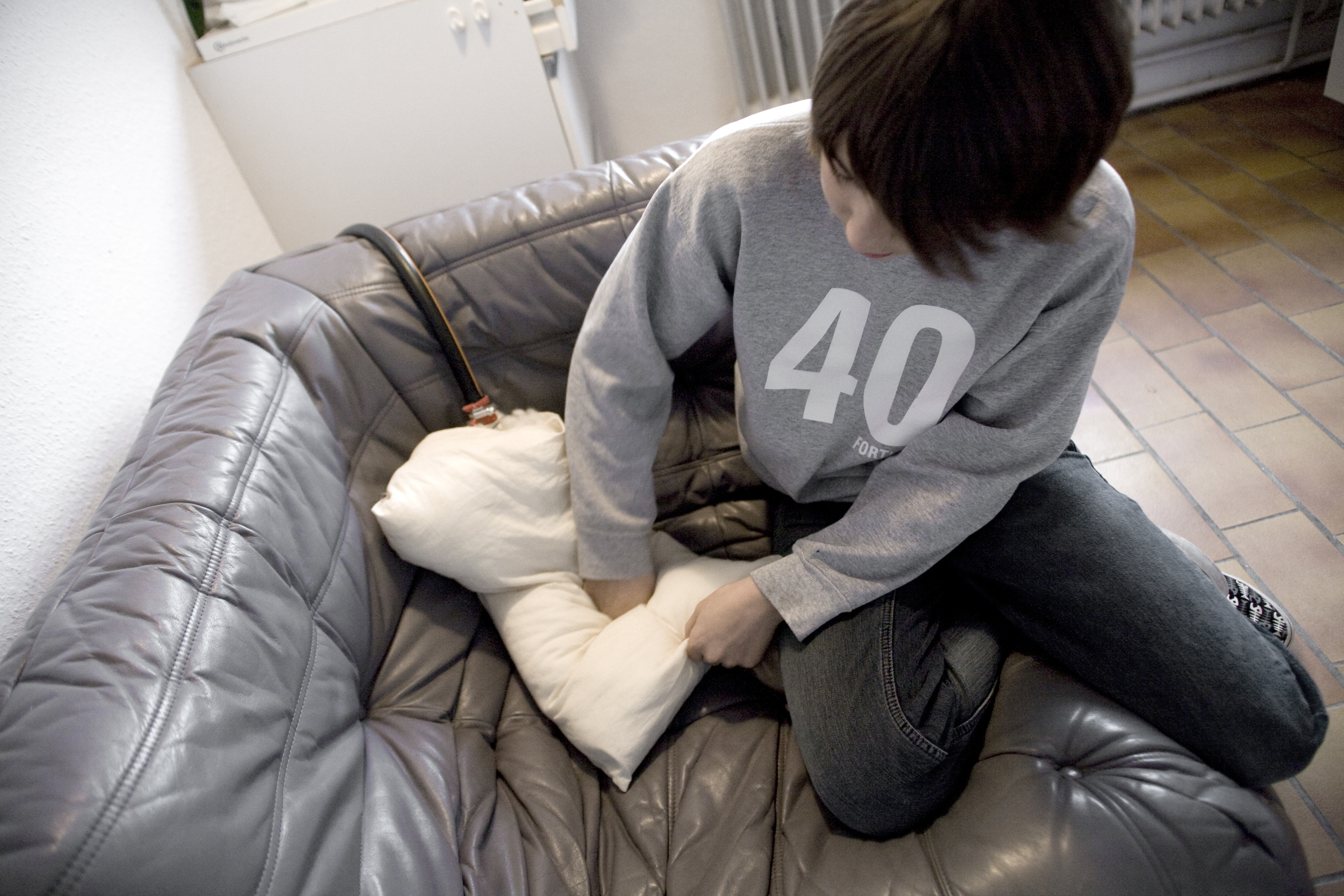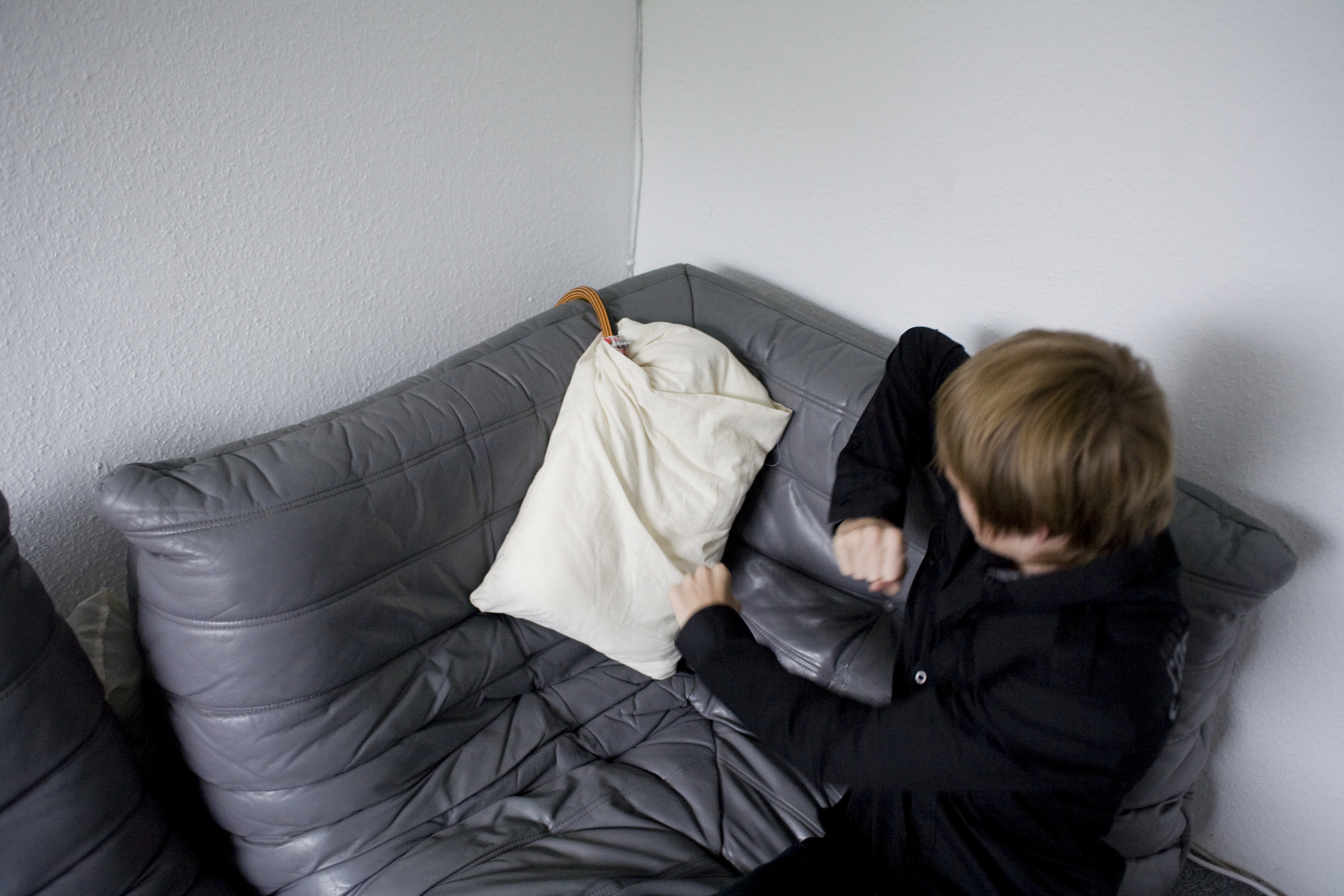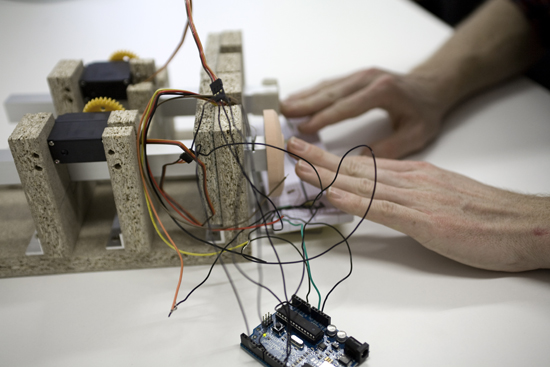Linked.
Experience Design (diploma thesis) by Matthias Laschke | 2010
Social exchange, closeness and relatedness are basic human needs. There is no passing day without talking face-to-face or through some alternative, technology-mediated channel. My thesis explored the social networks of teenagers (13-16 years old): How do they express closeness and relatedness, and which mediating technologies do they use. Boys vs. Girls – My analyses pointed at an interesting phenomenon: Relatedness between boys is often hidden, expressed only by little friendly hits or squabbling. Messages like „hey, here I am“ or „I like you“ are communicated nonverbally, but rarely made explicit as do girls of this age. „linked.“ enables boys to transmit this kind of physical communication over the distance to express their relatedness to friends, even when physically separated. The pillow is designed in a way that allows for a haptic communication which resembles squabbling. It supports typical phases such as „provocation“, „exchange“ and „the measuring of one‘s strength“ (similar to arm wrestling).
Also see "All You Need is Love: Current Strategies of Mediating Intimate Relationships through Technology" by Marc Hassenzahl, Stephanie Heidecker, Kai Eckoldt, Sarah Diefenbach and Uwe Hillmann.
Two boys from the original group were invited to explore the functional prototype. They were unaware of the actual location of their counterpart, which created the illusion of a much greater physical distance than actually given. Both boys easily caught on to the type of interaction offered by the pillow and found it positive: "It was really funny. I could give him a real punch" or "It is like a friendly squabble." Both exchanged soft punches, harder hits, but also surprisingly tender strokes. In the latter case, the boys sometimes even put their faces to the pillow. Such closeness would be nearly impossible in a face-to-face situation. This supports the notion of squabbling as a socially acceptable way to be physical with each other in a face-to-face situation.
Both boys were confronted with the final design model. Specifically, they were asked to imagine ways of using the pillows in their daily lives. The boys dreamt-up a number of personally meaningful scenarios, which were acted out and documented (see Figure 7). An example is the "wake-up call". Although one boy could sleep in, the other wakes him up early in the morning before he leaves to school. Who needs enemies with friends like this?
Physical feedback
We explored different means of transmitting force over a distance. Moreover we explored a potential future realization. A prototype of mainly two servo motors allow a way of interaction comparable to the air pillows. But the servos pillows can transmit their signal over a distance (e.g. over the internet).
However, a realistic implementation could be done by new technologies such as artificial muscles.

